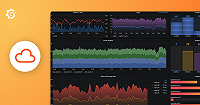About Pyroscope configurations
You can configure Grafana Pyroscope using a (YAML-based) configuration file or CLI (command-line-interface) flags.
You should specify your configuration using the configuration file rather than CLI flags.
Every parameter that is set in the configuration file can also be set via a corresponding CLI flag.
If you specify both CLI flags and configuration parameters, CLI flags take precedence over corresponding values in a configuration file.
You can specify the configuration file by using the -config.file CLI flag.
To see the CLI flags that you need to get started with Pyroscope, run the pyroscope -help command.
To see the current configuration state of any component, use the /api/v1/status/config HTTP API endpoint.
Operational considerations
You should use a single configuration file and either pass it to all replicas of Pyroscope (if you are running multiple single-process Pyroscope replicas) or to all components of Pyroscope (if you are running Pyroscope as microservices). If you are running Pyroscope on Kubernetes, you can achieve this by storing the configuration file in a ConfigMap and mounting it in each Pyroscope container.
This helps avoid a common misconfiguration pitfall: while certain configuration parameters might look like they’re only needed by one type of component, they might in fact be used by multiple components.
For example, the -distributor.replication-factor CLI flag is not only required by ingesters, but also by distributors and queriers.
By using a single configuration file, you ensure that each component gets all the configuration that it needs without needing to track which parameter belongs to which component. There is no harm in passing a configuration that is specific to one component (such as an ingester) to another component (such as a querier). In such a case, the configuration is simply ignored.
If necessary, you can use advanced CLI flags to override specific values on a particular Pyroscope component or replica. This is helpful if you want to change a parameter that’s specific to a certain component, without having to do a full restart of all other components.
The most common use case for CLI flags is to use the -target flag to run Pyroscope as microservices.
By setting the -target CLI flag, all Pyroscope components share the same configuration file, but you can make them behave as a given component by specifying a -target command-line value, such as -target=ingester or -target=querier.


